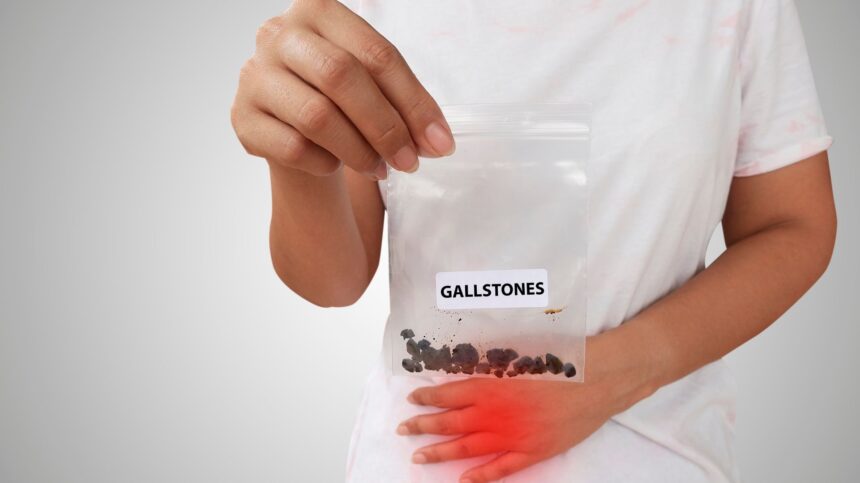Gallstones are a common health condition affecting the gallbladder, a small organ that plays a crucial role in digestion by storing bile. This condition occurs when bile hardens into stone-like lumps within the gallbladder, leading to potential discomfort and health complications. Understanding gallstones’ formation, symptoms, diagnosis, and treatment options is essential for managing and preventing this condition.
Formation of Gallstones
Gallstones are primarily formed from bilirubin and cholesterol found in bile. They can vary in size, growing from as small as a grain of sand to as large as a golf ball. The formation process is akin to how pearls develop within oysters, with particles clustering and gradually forming larger lumps.
Commonality of Gallstones
Gallstones are indeed common, especially among women. Factors contributing to their prevalence include hormonal changes due to multiple pregnancies, estrogen intake post-menopause, and the use of contraceptive pills. Both men and women who experience rapid weight loss or are over the age of 60 are also at an increased risk.
Symptoms of Gallstones
Often, gallstones do not present any symptoms until they cause a blockage in the gall duct. When symptoms do occur, they typically include:
- Severe abdominal pain on the right side, potentially spreading to the back
- Belching, nausea, and a reduced appetite, especially after consuming fatty foods
Diagnosing Gallstones
Diagnosing gallstones involves a combination of imaging tests and blood work:
- Abdominal Ultrasound: The primary method for detecting gallstones.
- Blood Tests: To identify infections, jaundice, pancreatitis, or other complications.
- Endoscopic Ultrasound: For detecting smaller stones missed by traditional ultrasound.
- Endoscopic Retrograde Cholangiopancreatography (ERCP): A technique used both to diagnose and remove gallstones in a single procedure.
Additional tests like oral cholecystography, computerized tomography (CT), and hepatobiliary iminodiacetic acid (HIDA) scan may be employed based on the specific case.
Treatment for Gallstones
Treatment is generally not required unless the patient experiences symptoms. When necessary, options include:
- Cholecystectomy: Surgical removal of the gallbladder to prevent future stone formation. Post-surgery, bile flows directly from the liver to the intestines, bypassing the need for storage.
- Oral Medications: These can dissolve the stones over time, but this method is slow and may not be effective for all types of stones. There is also a risk of recurrence once medication is discontinued.
Prevention and Early Detection
Early detection is crucial for effective treatment. Regular check-ups are recommended, especially for individuals at higher risk. Adopting a healthy lifestyle, maintaining a balanced diet, and managing weight can help prevent gallstone formation.
Conclusion
Gallstones are a prevalent condition that can lead to significant discomfort and potential complications if not addressed. Awareness of the symptoms, risk factors, and treatment options is vital for those at risk. If you suspect you may have gallstones or are experiencing related symptoms, seeking medical advice from a gastroenterology specialist is essential for accurate diagnosis and appropriate treatment. Early intervention can significantly improve outcomes and reduce the likelihood of severe complications.

